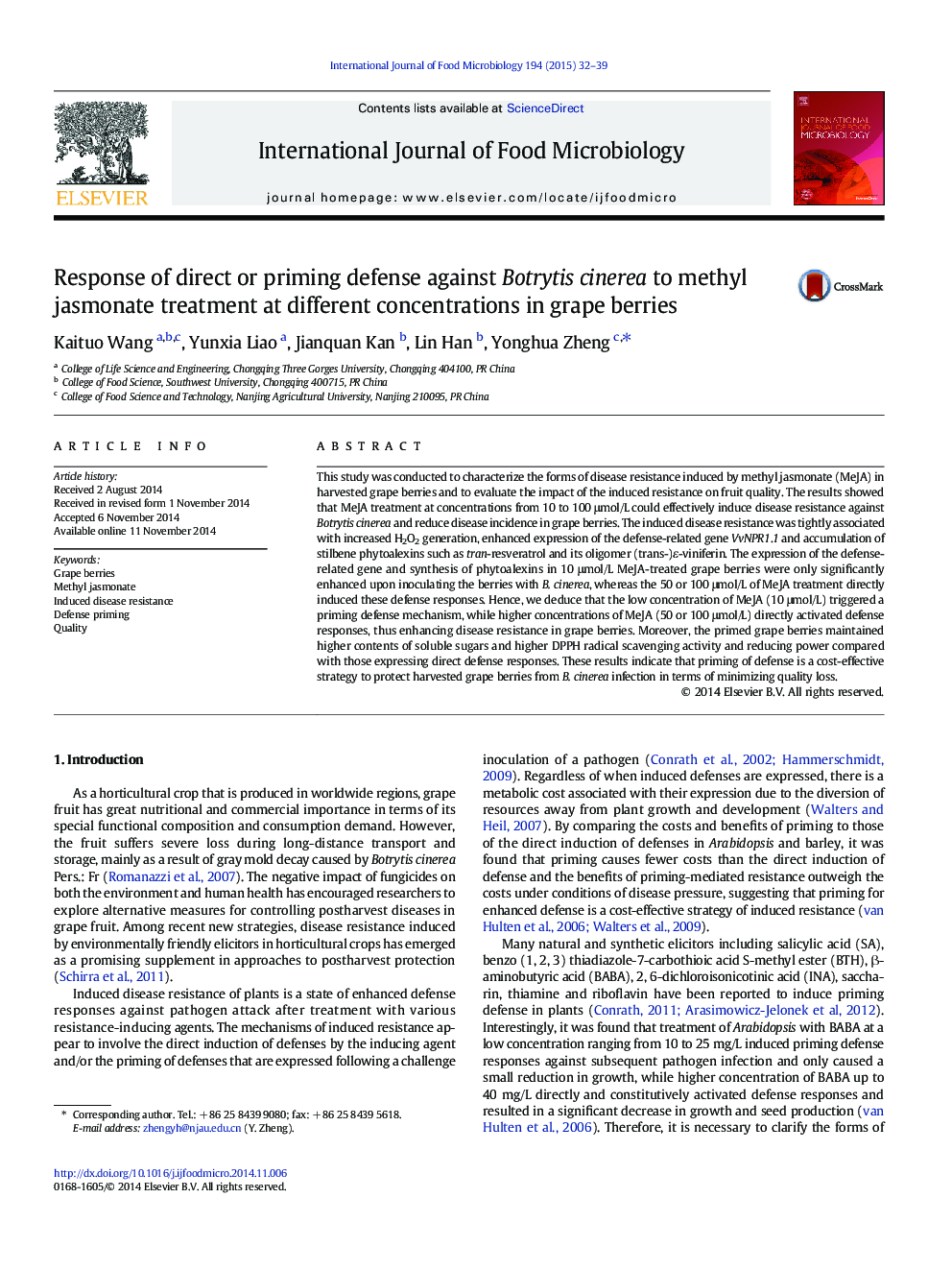| کد مقاله | کد نشریه | سال انتشار | مقاله انگلیسی | نسخه تمام متن |
|---|---|---|---|---|
| 4366689 | 1616589 | 2015 | 8 صفحه PDF | دانلود رایگان |

• MeJA applied from 10 to 100 μmol/L induced resistance against B. cinerea in grape berries.
• MeJA at 10 μmol/L induced priming defense, while MeJA at 50 or 100 μmol/L directly activated defense responses.
• The priming defense minimized quality loss.
This study was conducted to characterize the forms of disease resistance induced by methyl jasmonate (MeJA) in harvested grape berries and to evaluate the impact of the induced resistance on fruit quality. The results showed that MeJA treatment at concentrations from 10 to 100 μmol/L could effectively induce disease resistance against Botrytis cinerea and reduce disease incidence in grape berries. The induced disease resistance was tightly associated with increased H2O2 generation, enhanced expression of the defense-related gene VvNPR1.1 and accumulation of stilbene phytoalexins such as tran-resveratrol and its oligomer (trans-)ε-viniferin. The expression of the defense-related gene and synthesis of phytoalexins in 10 μmol/L MeJA-treated grape berries were only significantly enhanced upon inoculating the berries with B. cinerea, whereas the 50 or 100 μmol/L of MeJA treatment directly induced these defense responses. Hence, we deduce that the low concentration of MeJA (10 μmol/L) triggered a priming defense mechanism, while higher concentrations of MeJA (50 or 100 μmol/L) directly activated defense responses, thus enhancing disease resistance in grape berries. Moreover, the primed grape berries maintained higher contents of soluble sugars and higher DPPH radical scavenging activity and reducing power compared with those expressing direct defense responses. These results indicate that priming of defense is a cost-effective strategy to protect harvested grape berries from B. cinerea infection in terms of minimizing quality loss.
Journal: International Journal of Food Microbiology - Volume 194, 2 February 2015, Pages 32–39